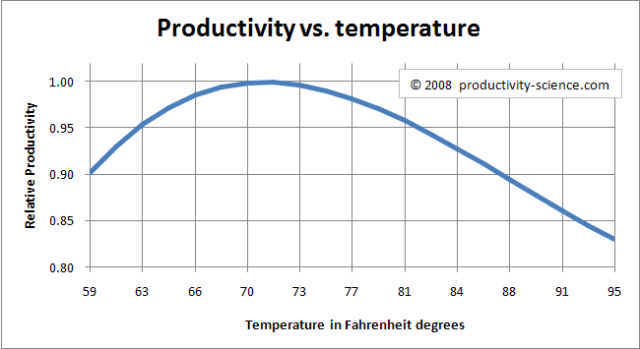Contributor: Anonymous
One great strategy to get more – and better – work done is to be in a reasonably warm and naturally lit place. All of this allows for an energetic you. Both light and temperature have a significant impact on energy levels.
Exposure to natural daylight, rather than dim or artificial lights, leads to a significant boost in energy – especially in the evening, when it really counts for busy students. Moreover, natural light also reduces our stress levels (because it helps our body regulate the production of the stress hormone cortisol in one 24-hr circadian cycle). Pragmatically speaking, grabbing that seat in Bora next to the window is a great way to get high-quality work done more quickly(1)!
A warm environment – rather than a cold one – has similar effects on energy and added benefits for mood. One reason for that is intuitive: when we’re cold, our body has to expend energy to warm up. To be specific, it looks like the optimal working-environment “comfort zone” range is between 22° C and 25° C. That being said, people differ in their set points: the key is to find a temperature that feels comfortable for you(2)!
But more surprisingly, in terms of regulating our mood, there is a fundamental interrelation between psychological and physical warmth. As we’ve discussed extensively here on this blog, increased happiness means increased productivity. So it’s likely more productive to take a break for a relaxing hot shower if you find that you’re losing your focus, rather than to keep banging your head against a roadblock you’ve hit on a stressful and frustrating problem. (This also means that the trope about coming home after a long, hard day and jumping into the shower to wash your cares away actually works.)(3)
All this leads up to three key pieces of advice:
- Wake up closer to sunrise (to maximize exposure to daylight, especially in winter).
- Find a bright environment to study in (to boost your energy for an evening of hard work).
- Keep your room warm enough if possible (and wear layers when at school, since as we all know, the climate control here can be a bit … unique).
Happy studies!
P.S. In addition to the articles below, a more extensive layperson’s discussion of these ideas is available at: http://blog.bufferapp.com/the-science-of-how-room-temperature-and-lighting-affects-our-productivity)
Sources for the Truly Nerdy
(1) – http://infoscience.epfl.ch/record/174780/files/M%C3%BCnch_BNE_2012.pdf
(2) – http://eaei.lbl.gov/sites/all/files/LBNL-60946.pdf
(3) – http://www.yale.edu/acmelab/articles/Bargh_Shalev_Emotion.pdf

